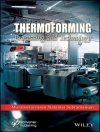Alkenes and Aromatics examines the reaction mechanisms associated with carbon-carbon double bonds, and then goes on to look at aromatic substitution (nitration, halogenation, sulfonation and Friedel Crafts reactions). The formation and reactions of diazonium ions are also discussed. This knowledge is then applied to the synthesis of pseudoephedrine, highlighting the key aspects of synthesis, such as yields, stereochemistry and reaction conditions. A Case Study on the organic chemical industry completes the book, providing a background as to why understanding organic reactions is so important. The Molecular World series provides an integrated introduction to all branches of chemistry for both students wishing to specialise and those wishing to gain a broad understanding of chemistry and its relevance to the everyday world and to other areas of science. The books, with their Case Studies and accompanying multi-media interactive CD-ROMs, will also provide valuable resource material for teachers and lecturers. (The CD-ROMs are designed for use on a PC running Windows 95, 98, ME or 2000.)
Tabla de materias
Part 1 Addition – Pathways and Products: Electrophilic Addition Reactions of Alkenes; Other Useful Addition Reactions; Part 2 Aromatic Compounds: Introduction; The Structure and Stability of Benzene; Electrophilic Aromatic Substitution Reactions; The Effects of Substituents; Diazonium Salts; Part 3 A First Look at Synthesis: Strategy for the Discovery of New Drugs; Compounds that Mimic the Action of Noradrenaline-Agonists; The Target: ¯Aminoalcohols; Planning the Synthesis of Pseudoephedrine; Carrying out the Synthesis; The Synthesis of ¯Aminoalcohols; A Different Way of Looking at Synthetic Efficiency; Case Study: Industrial Organic Chemistry.












